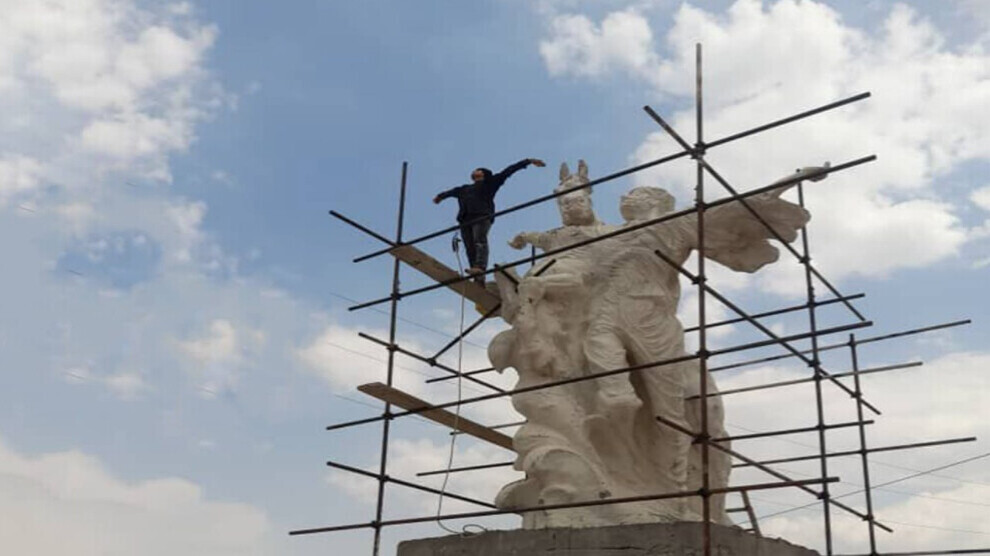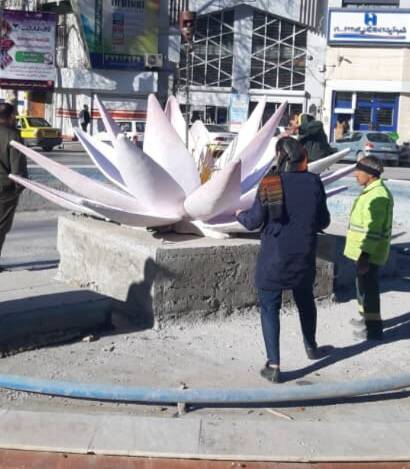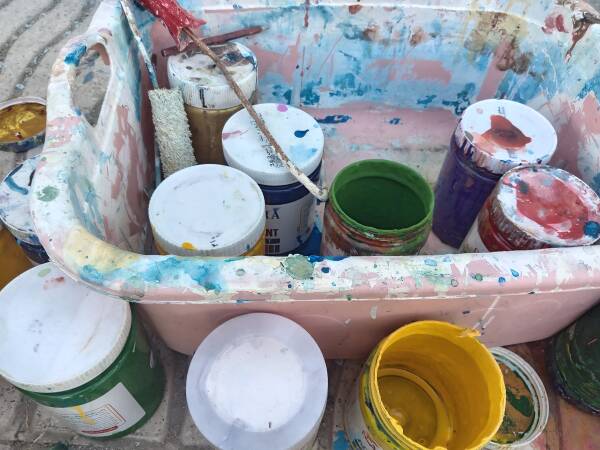Women, Art, and Freedom — An Inseparable Trinity in the Struggle of Somayeh M
Somayeh M., an artist from Kermanshah in Eastern Kurdistan, has transformed walls and statues into platforms of feminist resistance — spaces where the bond between women, art, and freedom comes vividly to life.

Naseem Ahmadi
Kermanshah- Shiite religious doctrine traditionally forbids visual representation in all its forms — paintings, sculptures, or depictions of living or inanimate beings. Yet, despite this prohibition, a young woman from Kermanshah continues to paint vibrant scenes of life, using art as a tool to affirm existence itself.
For over fifty thousand years, humanity has etched its stories and beliefs onto walls — an act that gave birth to what we call art. Despite centuries of attempts to suppress or question this heritage, art has endured as the purest expression of the human spirit — an act of renewal that fills life with meaning and vitality.
In recent years, women’s continuous struggle has broken through barriers that once confined them to domestic spaces or excluded them from certain professions. Across the world — and in Iran and Kurdistan especially — women have entered fields long considered the domain of men, both to make a living and to assert their voices.
In the city of Kermanshah, Somayeh M. paints her life story on the walls and rooftops of her hometown. Sometimes she works with a brush, other times with her fingertips, climbing scaffolds with fearless determination as passersby watch in awe. Each mural she creates breathes life into dull concrete, transforming the city into an open-air gallery that reflects her passion and courage.
Her art is both silent and bold — she does not confine it to her private room but brings it out into public view. Each stroke of her brush is not merely color, but a declaration of female presence, a message that says: public space does not belong to men alone.
Her murals are not just aesthetic creations; they are acts of protest that redefine the street as a space for women’s resistance. Just as streets have historically been battlegrounds against oppression, today they are becoming stages for women’s voices — with Somayeh’s brush as her symbolic weapon.
Throughout history, walls have played a central role in revolutions, serving as canvases for rebellion and reclaiming public space from authority. Somayeh continues this legacy, proving that art can be a form of resistance and that women can reshape the city through their spirit and creativity.

During the Jin, Jiyan, Azadî (“Woman, Life, Freedom”) uprising, walls across Iran and Kurdistan turned into platforms of protest, once reserved only for state propaganda. As popular anger grew, these spaces escaped the control of power and became symbols of defiance, covered with slogans that spoke in the language of the streets.
At certain moments, a wall is no longer just a surface — it becomes a medium of communication, a witness to history written in color and passion. Every person with a pen or brush can record a piece of that story. Somayeh found herself among them — documenting her struggle in her own artistic language.
Her creativity goes beyond murals; she also sculpts statues — sometimes shaped like human figures, sometimes like lotus flowers — expressions of persistence and beauty that reshape public space through a distinctly feminine energy.

Among her most significant works is the Lotus Flower sculpture, which she created with her own hands and installed in the heart of the city. For her, the lotus represents her own journey as a woman — rising from darkness, enduring hardship, and emerging into the light in full bloom.
Her paintings, her sculptures, and her lotus standing proudly in the public square all embody an unbreakable connection between woman, art, and freedom. Through her struggle, Somayeh M. has given these works a soul and a purpose — transforming them into symbols of inspiration for all who seek liberation.
